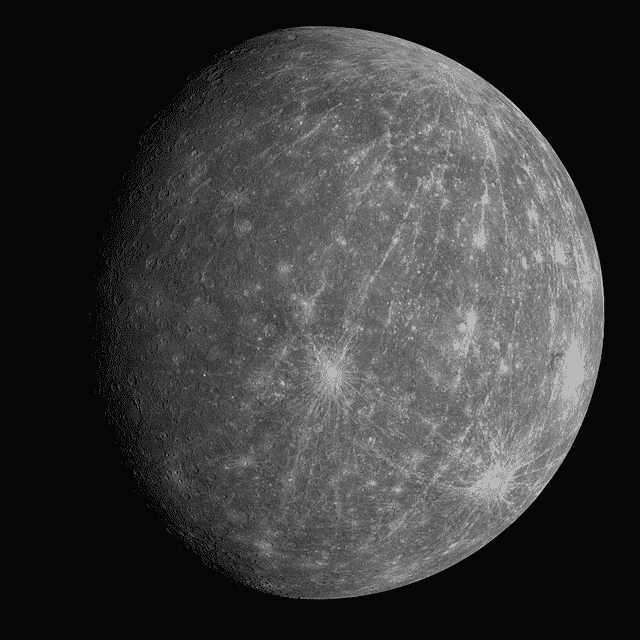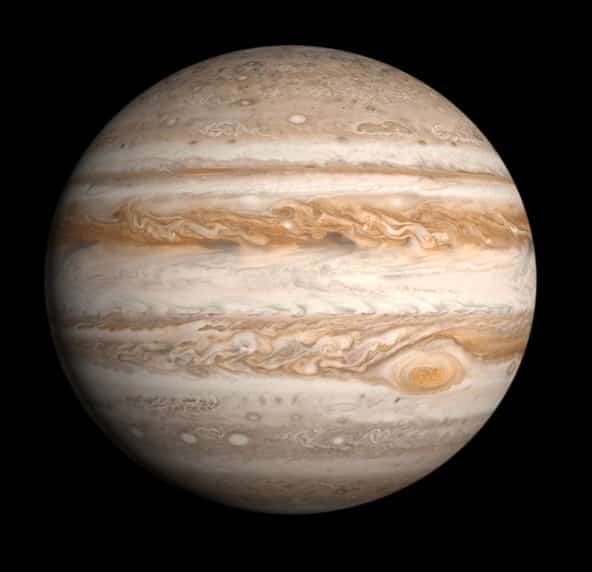This blog post lists some interesting facts about the planets of our solar system. The 8 planets in our solar system are listed in the ascending order of their distance from the Sun below.
Mercury
Mercury is a rocky planet made of a liquid metal core. The core constitutes 42% of the planet surrounded by a mantle made of silica and a solid outer crust.

Image by WikiImages from Pixabay
Venus
This planet is similar to the size and mass of our planet. However, it has a surface and atmosphere that differs from our planet considerably. Its atmosphere is extremely dense and made up of 96% Carbon dioxide and 3.5% Nitrogen.

Image by WikiImages from Pixabay
On the surface of venus, the air would be 90 times denser than that on earth. The atmospheric pressure would be equivalent to the pressure that is experienced while diving 3000 feet beneath the ocean. Due to the Green-house effect caused by Carbon dioxide, Venus is the hottest planet in our solar system. Its surface temperatures can rise up to 900°C.
Earth
Since we already know so much about the planet we live in, I skipped this section.
Mars
Mars has a rotational period and rotational axis similar to that of the Earth. Consequently, the days and seasons on Mars are similar to that of earth. It is nicknamed the `Red planet` of the solar system due to the presence of iron oxide on its surface.

Image by WikiImages from Pixabay
Mars’ atmosphere consists of almost 95% Carbo dioxide. Its atmospheric pressure is around 1% of earth’s atmospheric pressure. Therefore, liquid water cannot exist on the surface of Mars due to its low atmospheric pressure. However, its poles are covered with frozen water, which when melted can fill the surface with 11 meters of water. Mars also has 2 small moons.
Jupiter
Jupiter is one of the two gas giants in the solar system. It is composed of three-fourths of Hydrogen and almost one-fourth of Helium. Yet, its core is believed to be rocky.

Jupiter`s diameter is ten times smaller than that of the Sun, but eleven times bigger than that of the earth. Its outer atmosphere is home to several storms – the Great red spot, the biggest of these storms has been raging (at least) since the 17th century when it was first found and is almost twice as big as the earth. Jupiter also has 79 moons.
Europa
If you are looking for life in the solar system outside of earth, Europa may be your best bet. One of the biggest satellites of Jupiter, Europa is slightly smaller than our moon. However, it has all the three ingredients required to form and sustain life: liquid water, an energy source and the right organic compounds. It consists of an ice shell under which a thick layer of liquid water exists.

Saturn
The second biggest planet in our solar system and another gas giant, Saturn is also mostly made up of Hydrogen and Helium. It is famous for its rings which are formed by chunks of rock and ice. It has 62 moons. Saturn takes 10.7 hours to rotate once and 29 years to revolve around the Sun once.

Titan
The biggest moon of Saturn (which is bigger than Mercury), Titan, is the only moon in the solar system to have an atmosphere (made primarily of Nitrogen and Methane). This moon is believed to have the same conditions as early earth, since it is rich in hydrocarbons. It has liquid methane on its surface even though water and Oxygen are yet to be found.

Uranus
As the coldest planet in the solar system (-224°C), Uranus is one of the ice giants of the solar system. Although similar in composition to Jupiter and Saturn, Uranus has a layer of icy materials – water, methane and ammonia surrounding a small, rocky core. This methane is the reason for the Blue color of the Uranus. Uranus has 13 rings and 27 moons.

Image by WikiImages from Pixabay
Neptune
The only planet in the solar system not visible to the naked eye, Neptune can only be seen through a telescope. It is also known as an ice giant. Even though Uranus hits the coldest temperatures in some parts of the year, Neptune has the colder average temperature among all planets. It has 13 moons and 6 rings.

Image by WikiImages from Pixabay
Fun facts about the planets of our solar system
- Venus is the only planets that rotates from East to West.
- Uranus rotates on its sides, i.e., its poles are where the other planets have their equator.
- One day on Mercury is 59 days long and one year is just 88 days long. Because of Mercury‘s elliptical orbit and sluggish rotation, the morning sun appears to rise briefly, set and then rise again in some parts of the planet. The same thing happens in reverse at sunset.
- Neptune is the windiest world of the solar system, with winds of frozen methane traveling at 2000km/hr. The fastest winds on earth, however, hit only 400km/hr.
- Neptune is the only planet in the solar system not visible to the naked eye.
Wait, Aren‘t there 9 planets in our solar system?
Until 1930, people believed there were only 8 planets in our solar system. However, with the discovery of Pluto on February 18, 1930, kids started learning about the nine planets of our solar system.
In the late 1990s, doubts about Pluto being a planet started to emerge.
The IAU definition of a full-fledged planet goes like this: A body that circles the sun without being some other object’s satellite, is large enough to be rounded by its own gravity (but not so big that it begins to undergo nuclear fusion, like a star) and has “cleared its neighborhood” of most other orbiting bodies.
Pluto, however, is not only small and has an offbeat orbit, but also shares its space with several asteroids in the Kuiper Belt, beyond Neptune.
Therefore, the International Astronomical Union declared Pluto as a “dwarf planet” in 2006. Thus the number of planets in our solar system was brought down to 8 once again.
We hope that these interesting facts about the planets of our solar system helped you learn about the solar system. If you liked this blog poast, you will like the following blog post too:
Leave a Reply